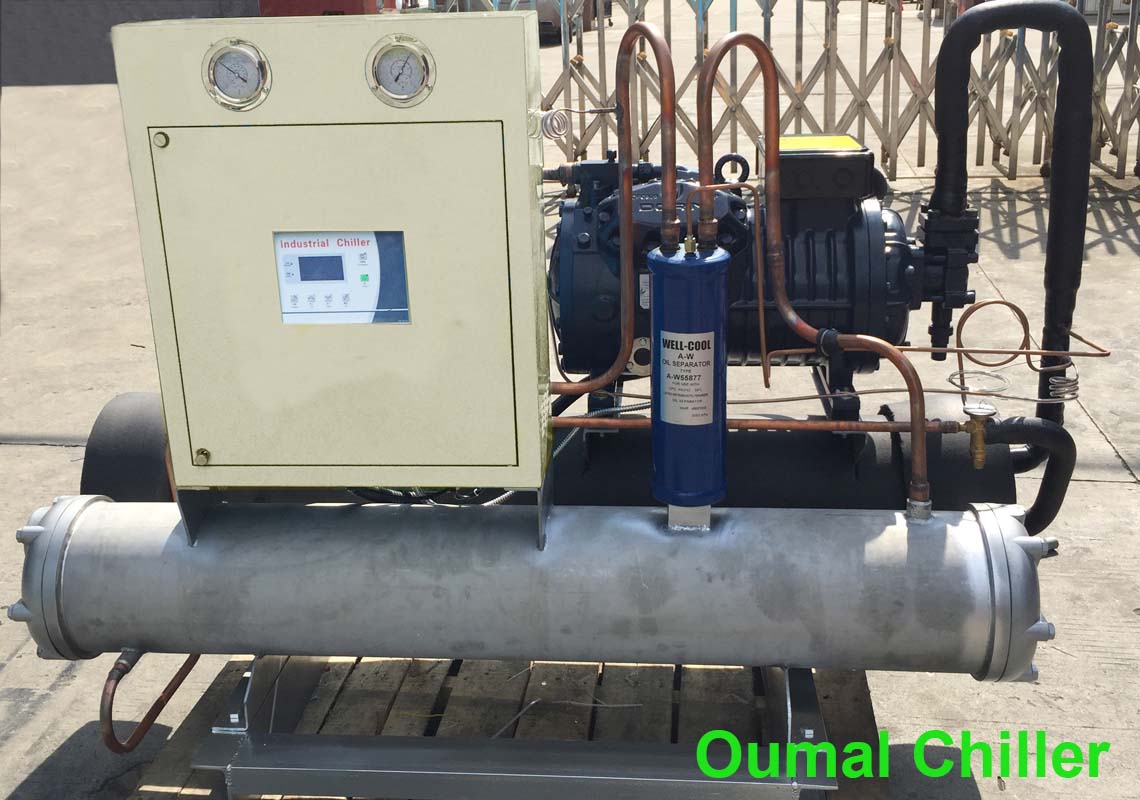How to control the temperature of the outlet water of the low-temperature chiller - Oumalchiller.com
The structure of low-temperature chillers is similar to that of piston chillers. Low-temperature chillers generally refer to chillers whose outlet temperature is less than or equal to 5°C. They are mainly used for process cooling in food processing, chemical, pharmaceutical and other industries. Low-temperature chillers are usually used for low-temperature requirements on certain special production lines in the industry. Low-temperature chillers can generally reach about -40°C.
Low-temperature chillers are quite different from conventional chillers in terms of unit design due to the lower temperature of the outlet water. The most basic difference is that on the chilled water side, the cryogenic unit needs to be added with the appropriate type and concentration of antifreeze. Low-temperature chillers include low-temperature air-cooled chillers, low-temperature water-cooled chillers, low-temperature screw chillers, and low-temperature piston chillers. So how to control the temperature of the outlet water of the low-temperature chiller?
The main refrigerants used in low-temperature chillers are ethylene glycol solution, sodium chloride solution and calcium chloride solution. Their operating temperatures are as follows: ethylene glycol solution 4~-20℃, sodium chloride solution -15~-25 ℃, calcium chloride solution -20~-45℃. The chiller that has used glycol as the refrigerant is also called glycol chiller. The water supply temperature of the low-temperature chiller is determined according to user needs. However, it should be noted that the condensation point of brine is related to the concentration of brine. Therefore, the brine concentration of the equipment must ensure that it freezes inside the evaporator of the chiller. The actual operating temperature should be 5~8℃ higher than the freezing point of brine. Secondly, it should be noted that the concentration of sodium chloride solution and calcium chloride solution must not exceed their eutectic concentration.
In addition, sodium chloride solution and calcium chloride solution have a corrosive effect on metal materials. Corrosion inhibitors should be added during use to adjust the pH of the solution to 7.0-8.5. Add sodium dichromate as a corrosion inhibitor, the addition amount is: add 3.2kg sodium dichromate per 1 cubic meter of sodium chloride solution, and add 2kg sodium dichromate per 1 cubic meter of calcium chloride solution.
Controlling the outlet temperature of low-temperature chillers can not only increase the cooling capacity of low-temperature chillers, but also help companies increase production. Omar Refrigeration provides customized production of low-temperature chillers. According to the customer's water temperature, water tank size, compressor type, and type of refrigerant, it provides customized chillers. For the price of low-temperature chillers, please contact us for the most detailed solution.

评论
发表评论